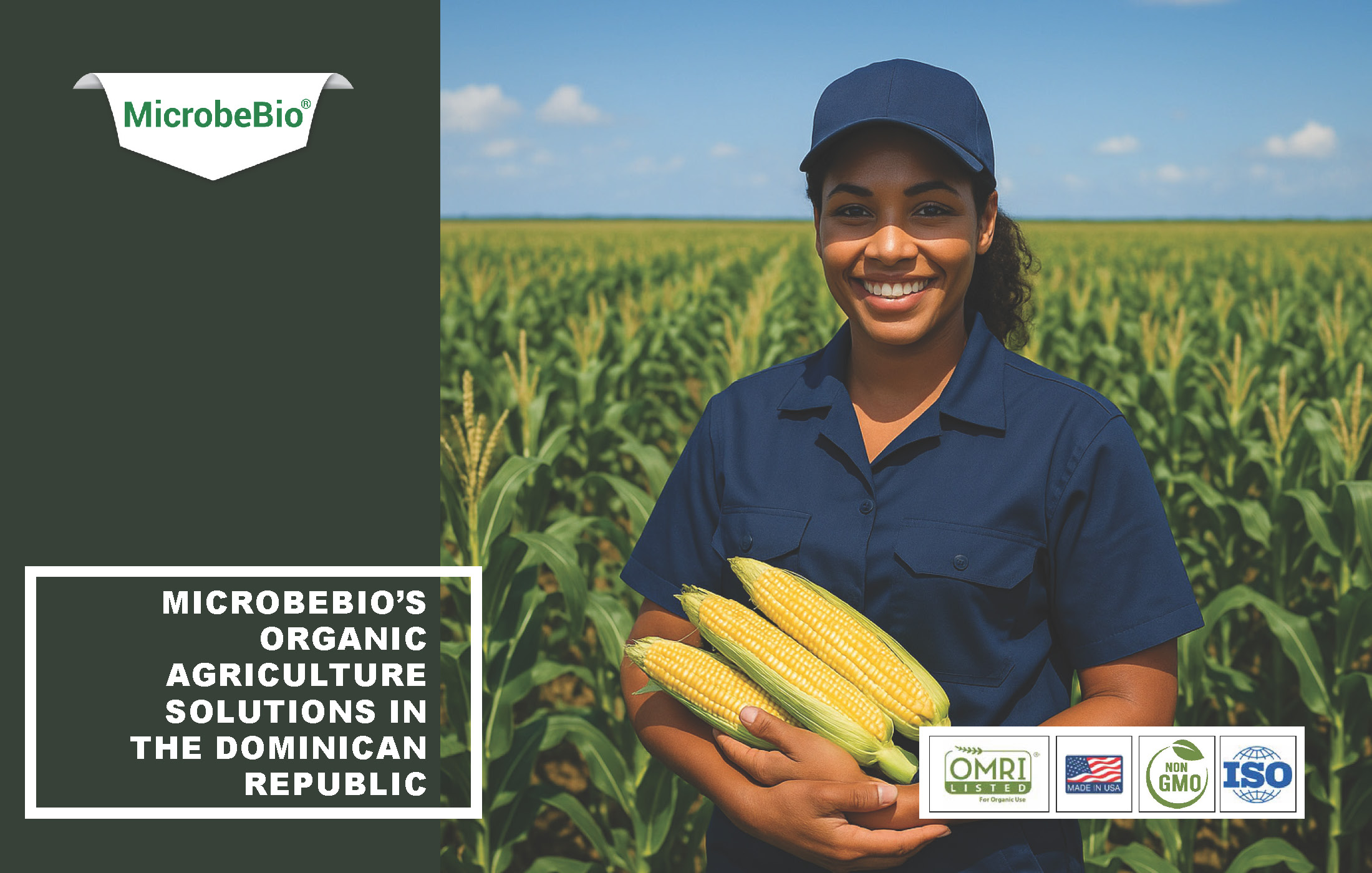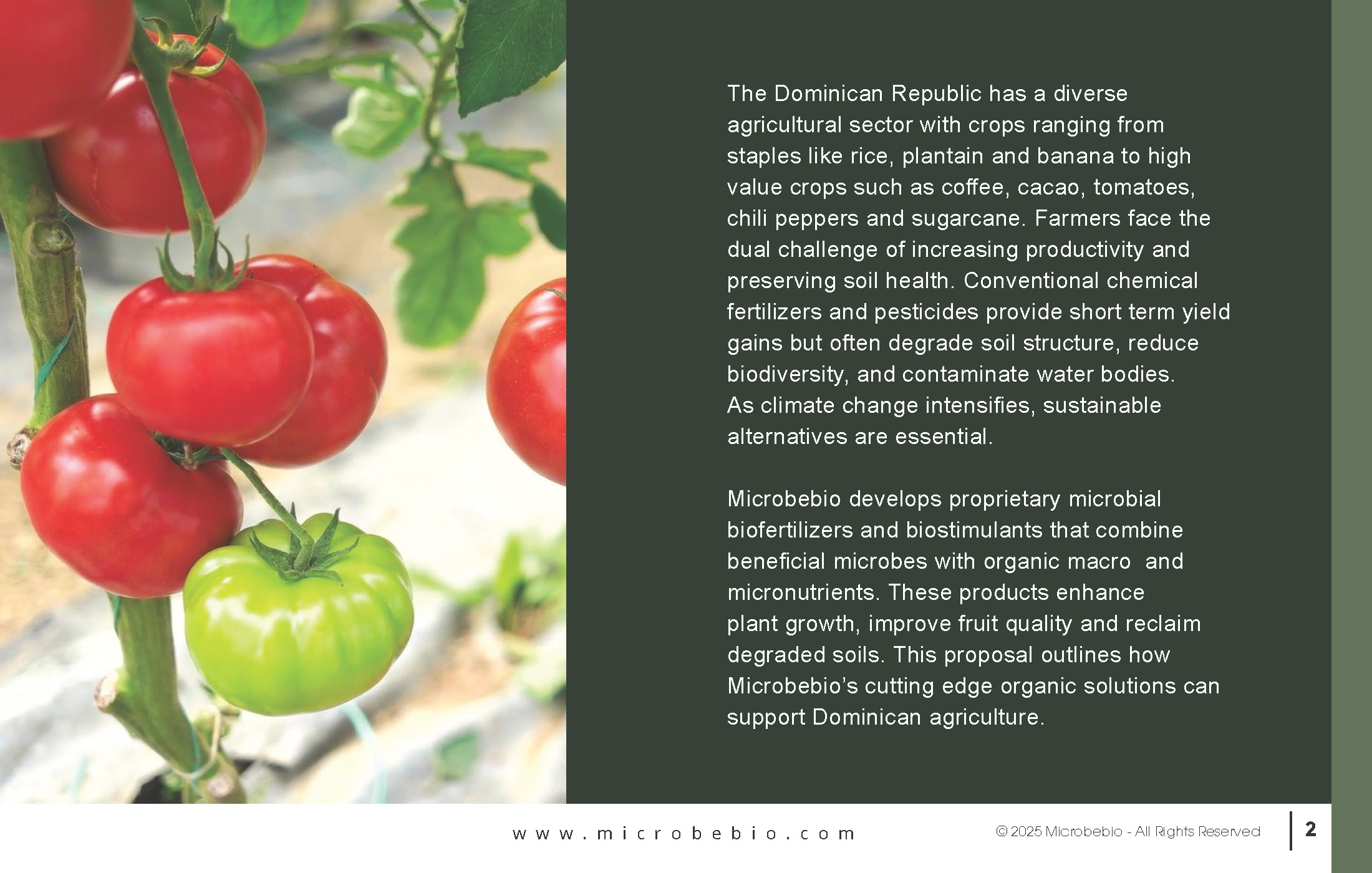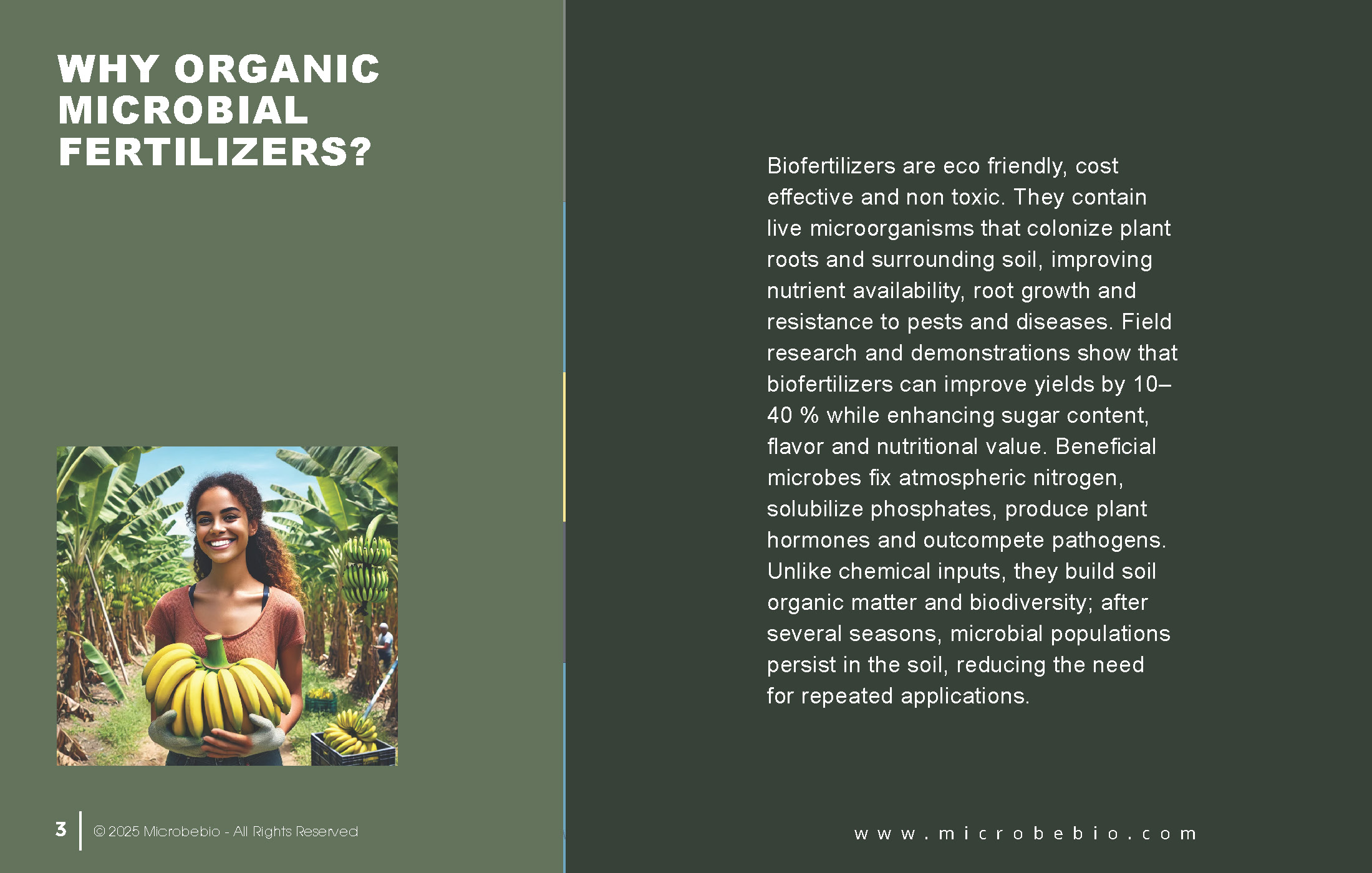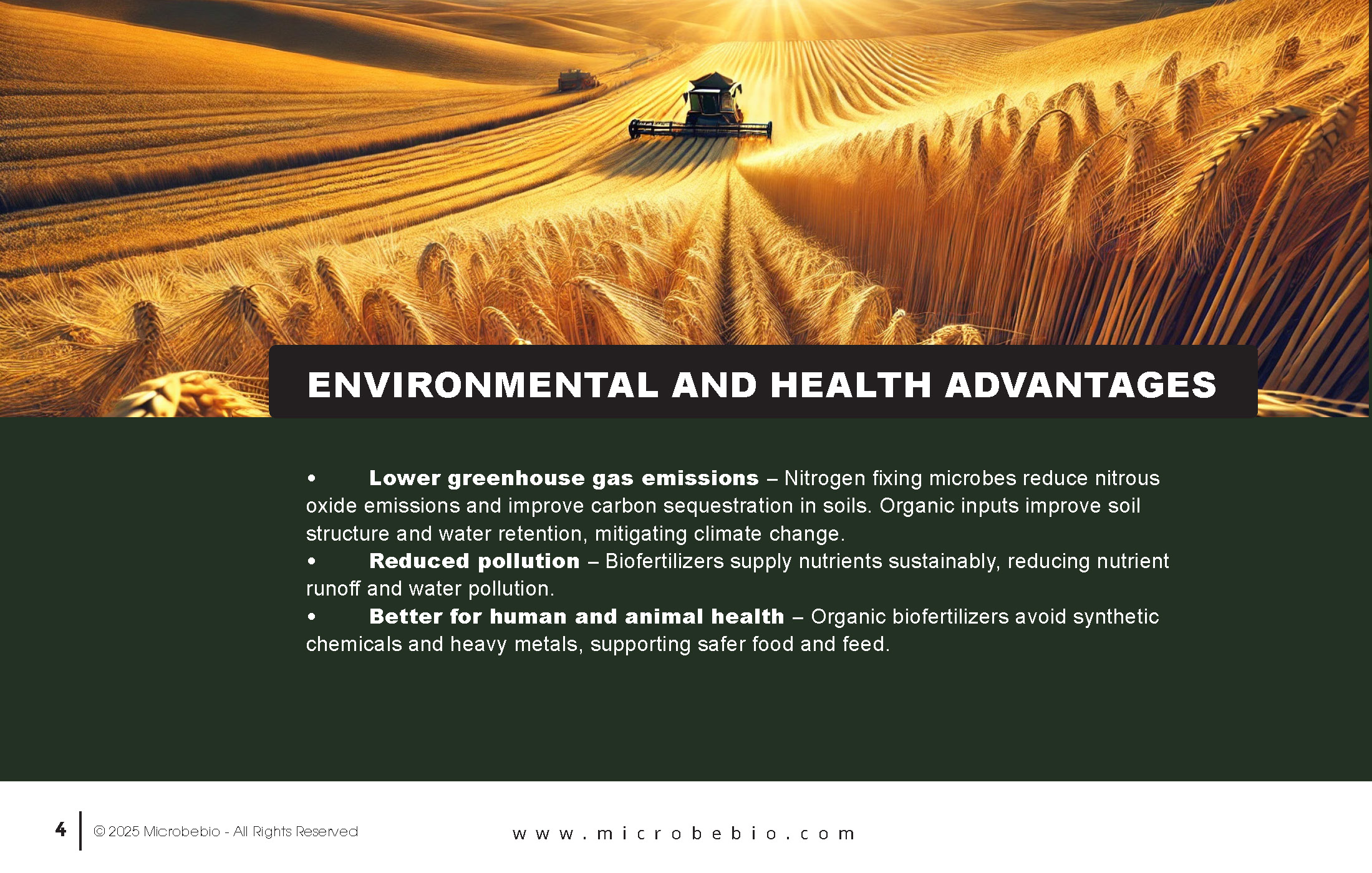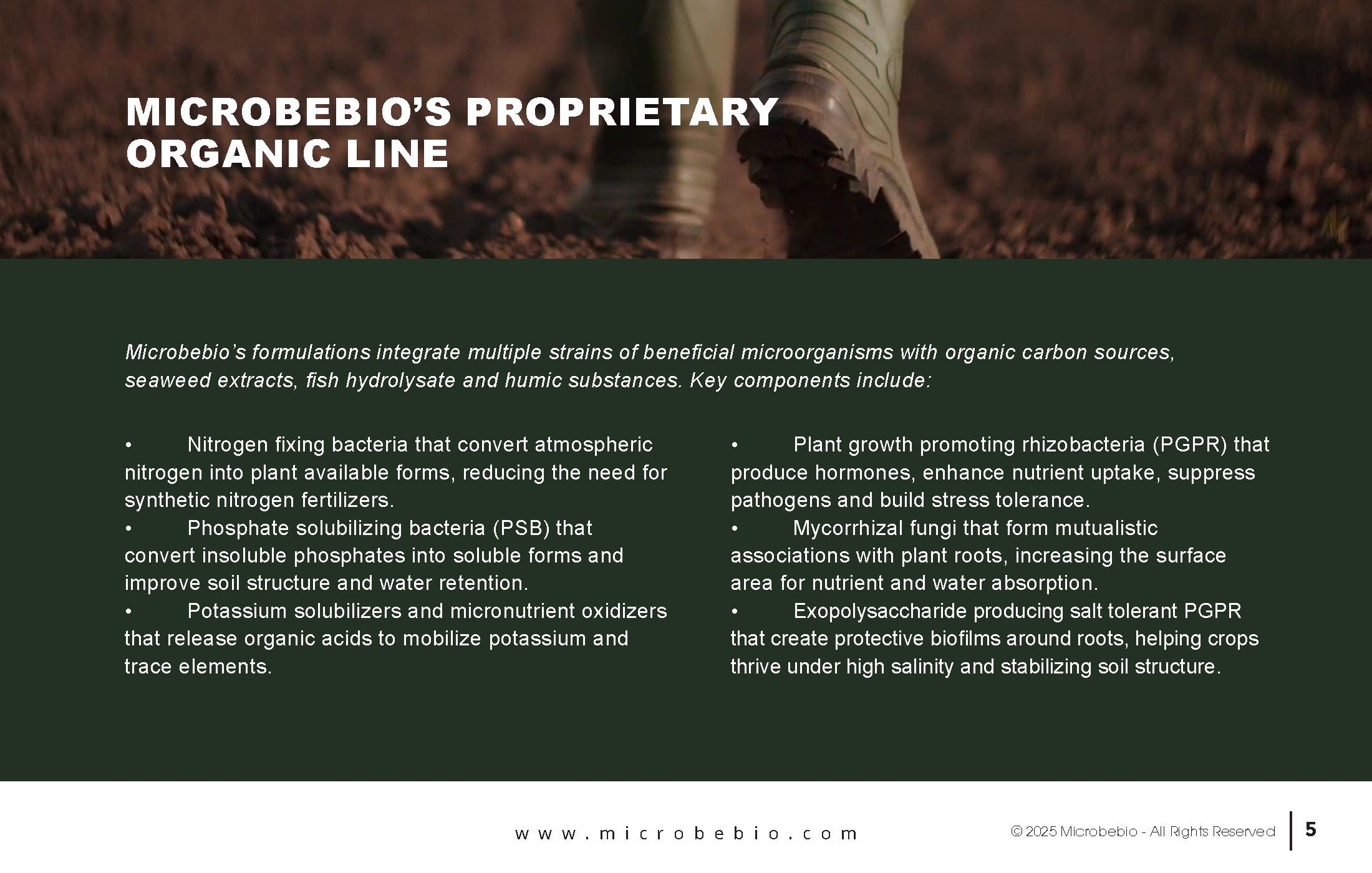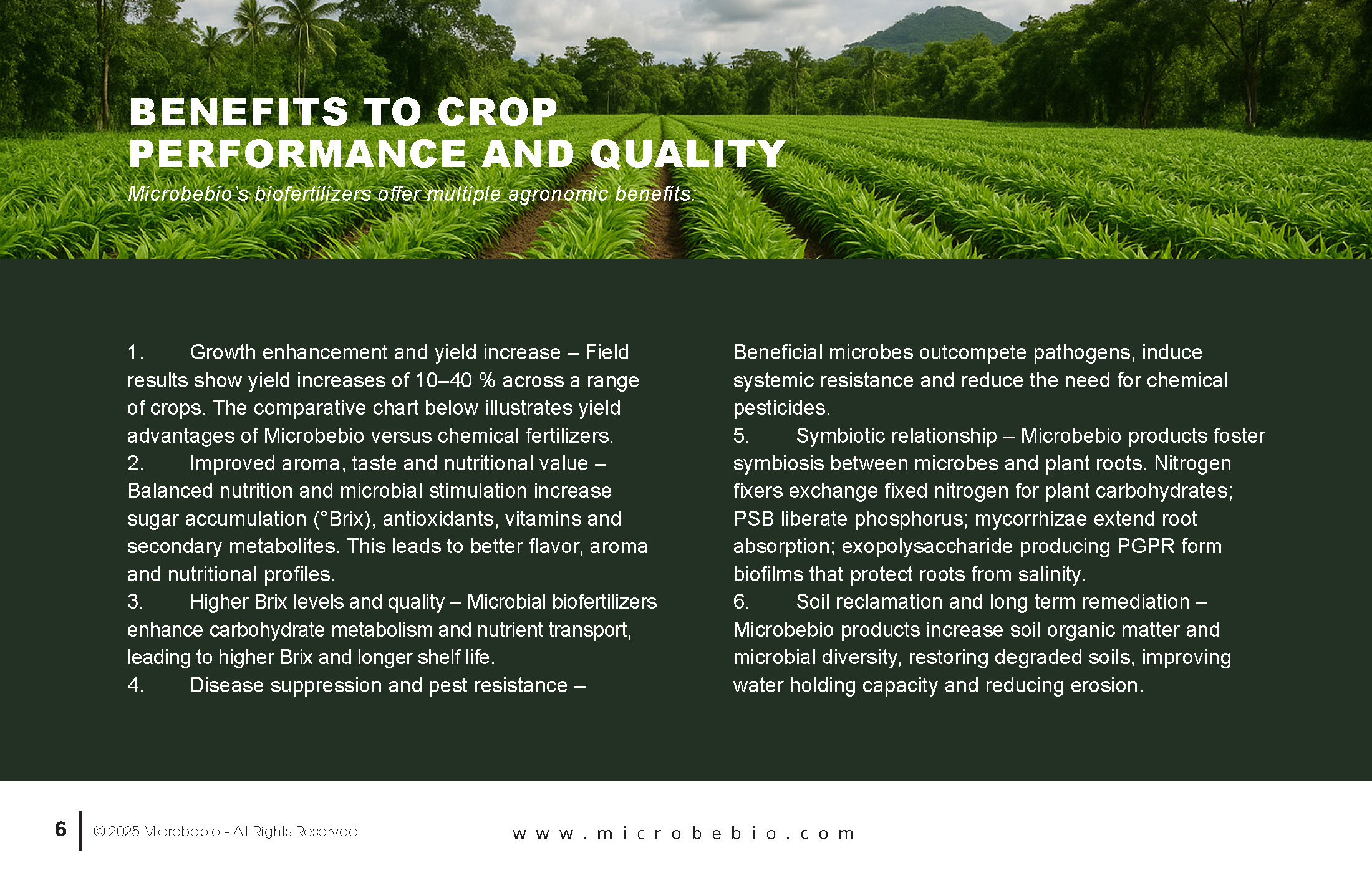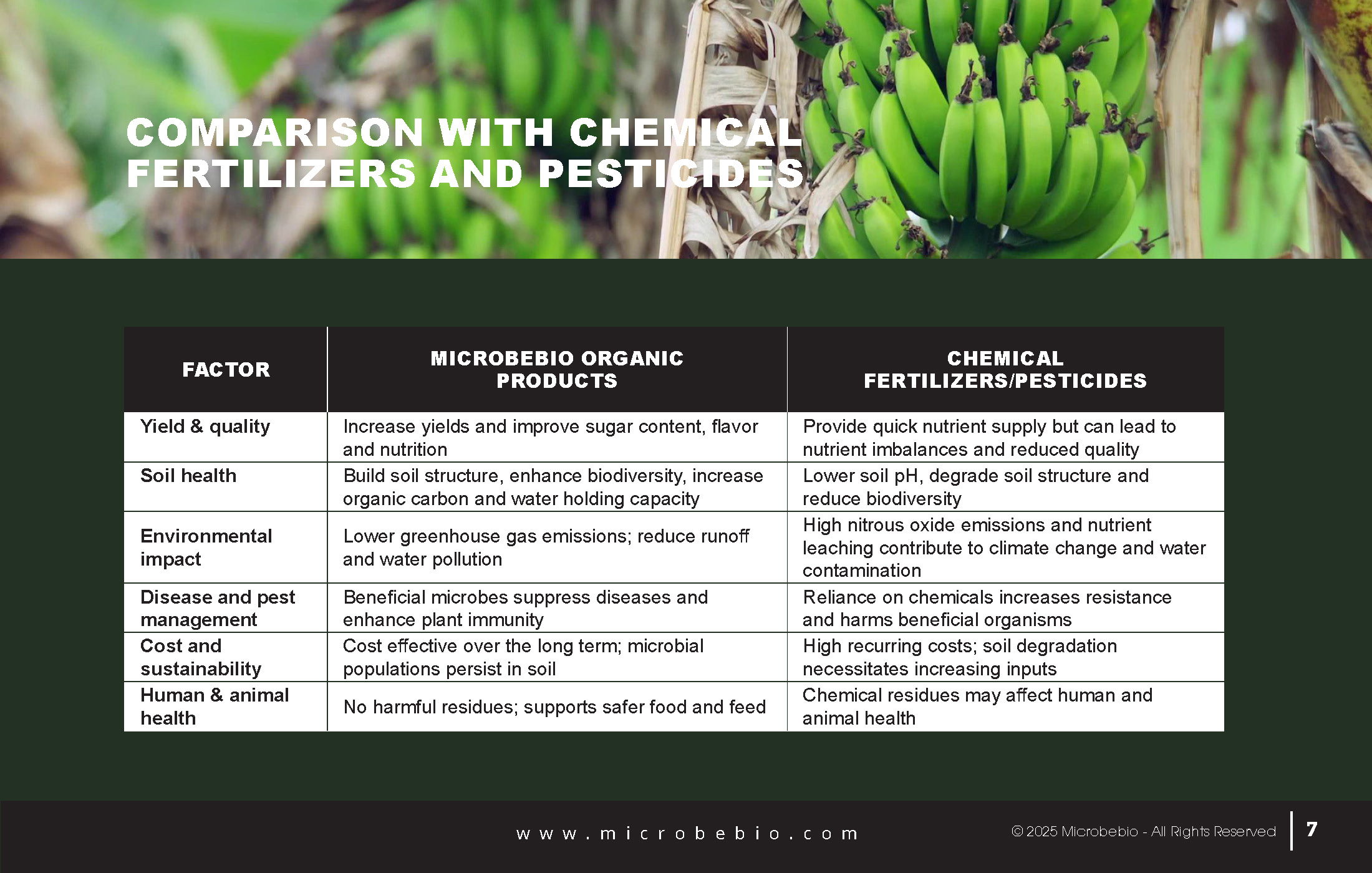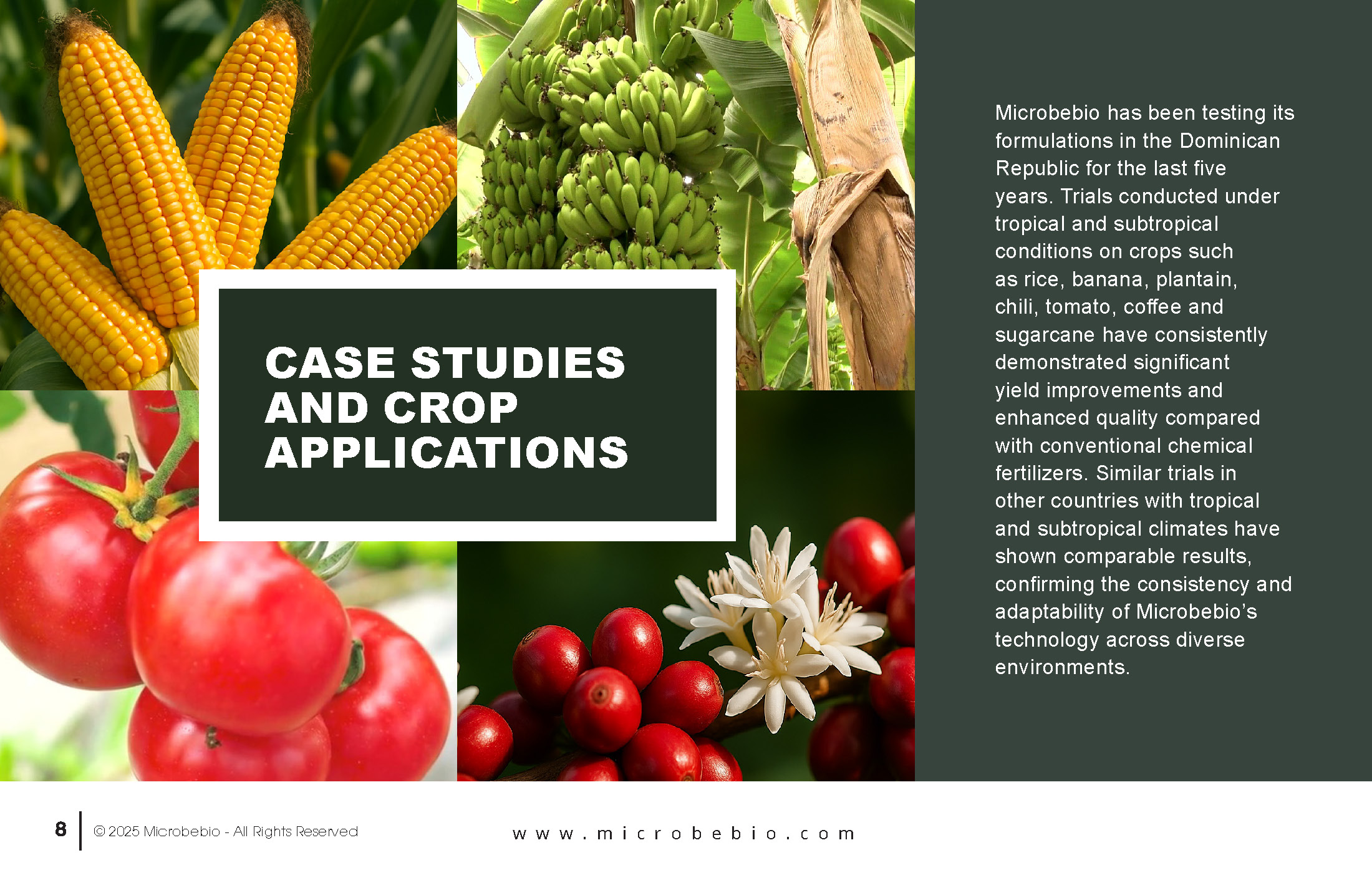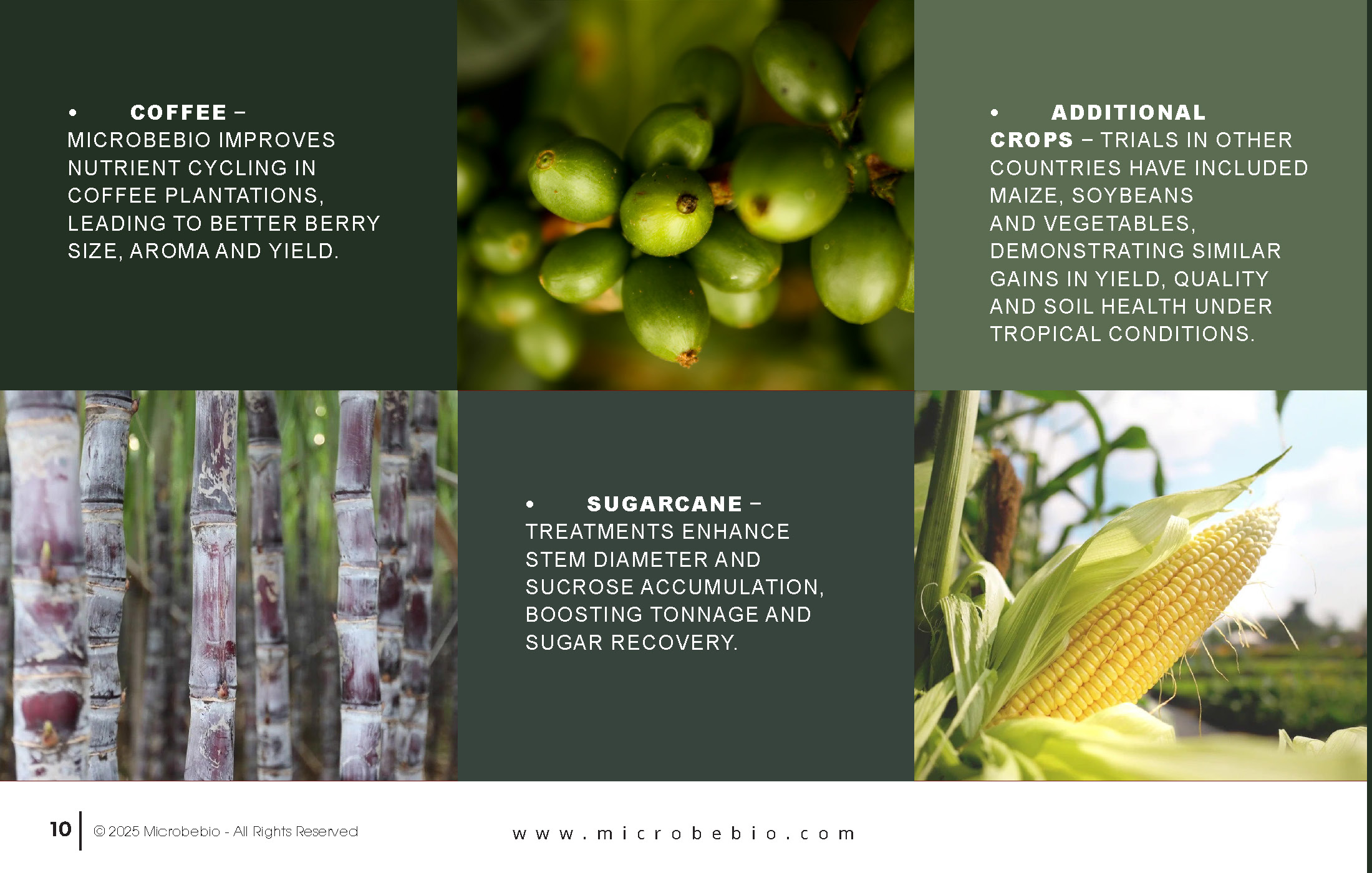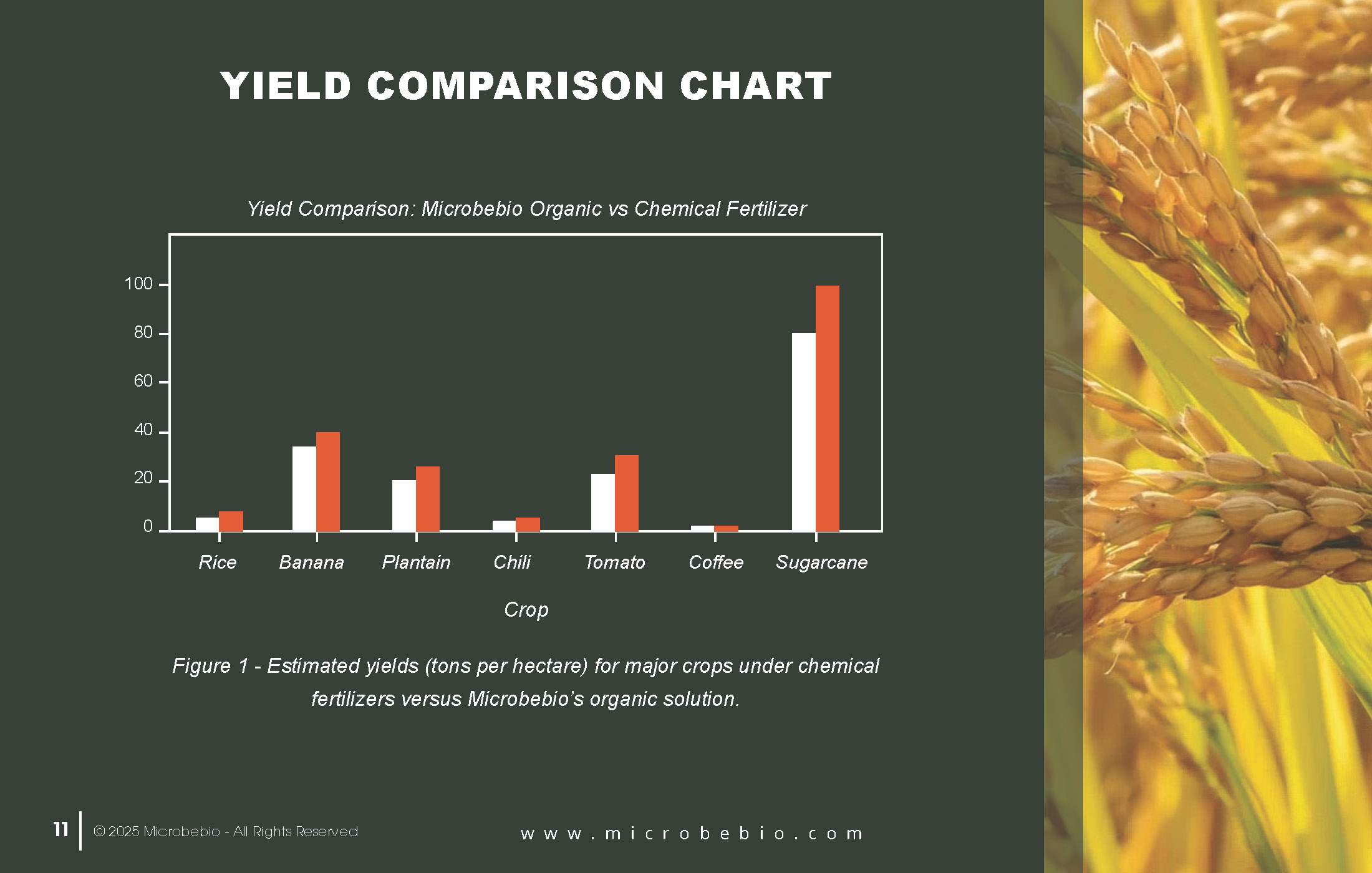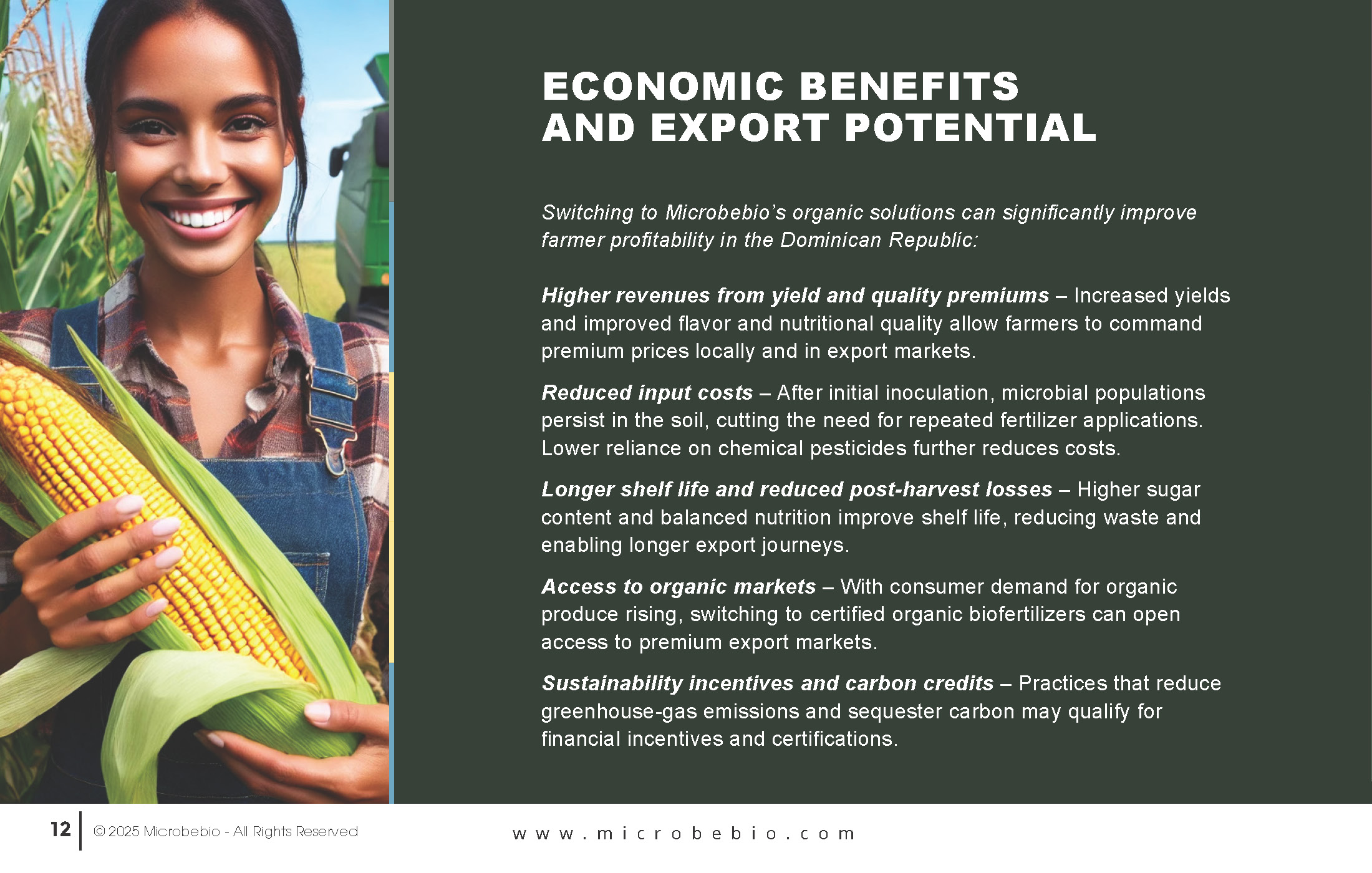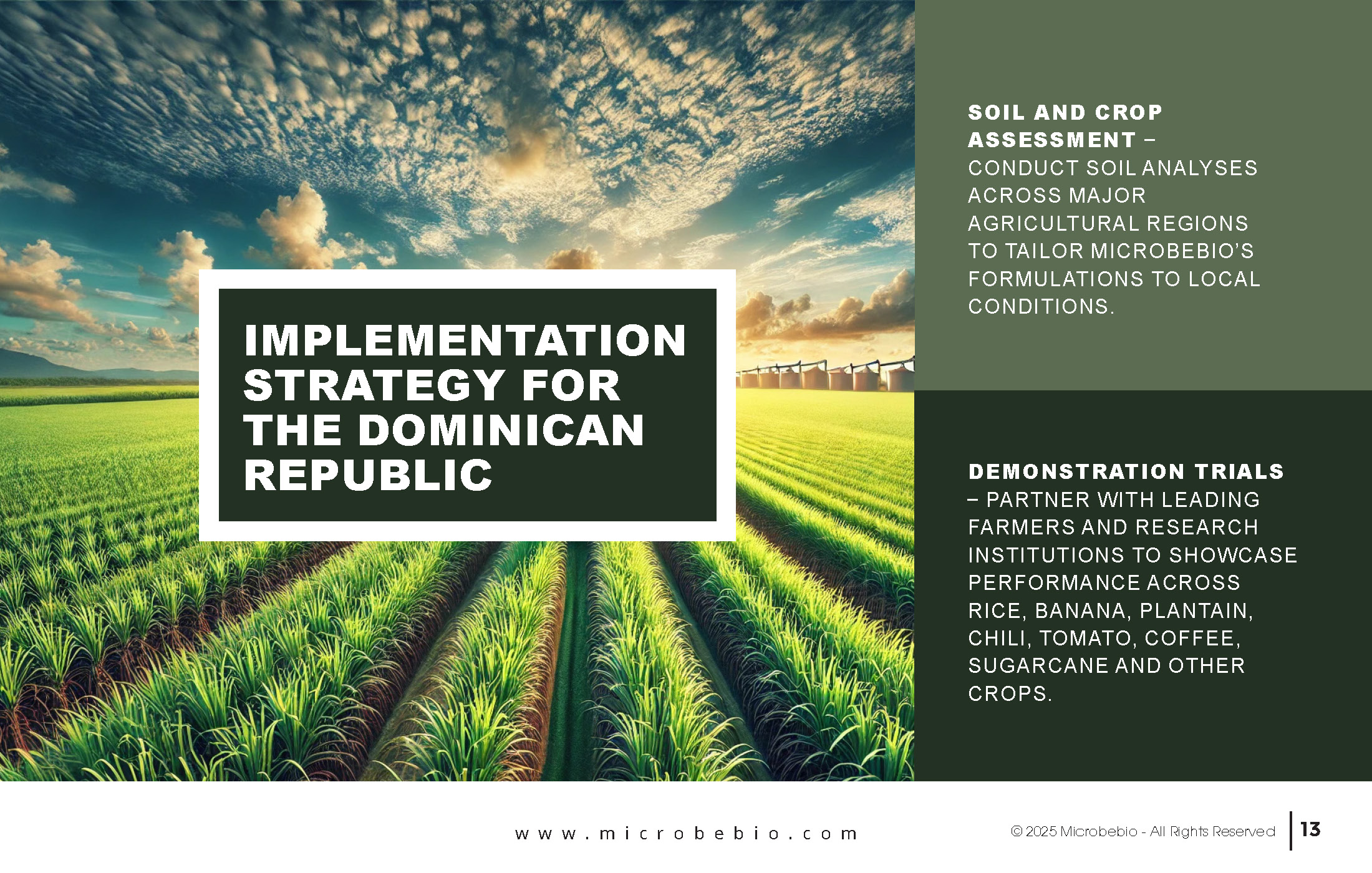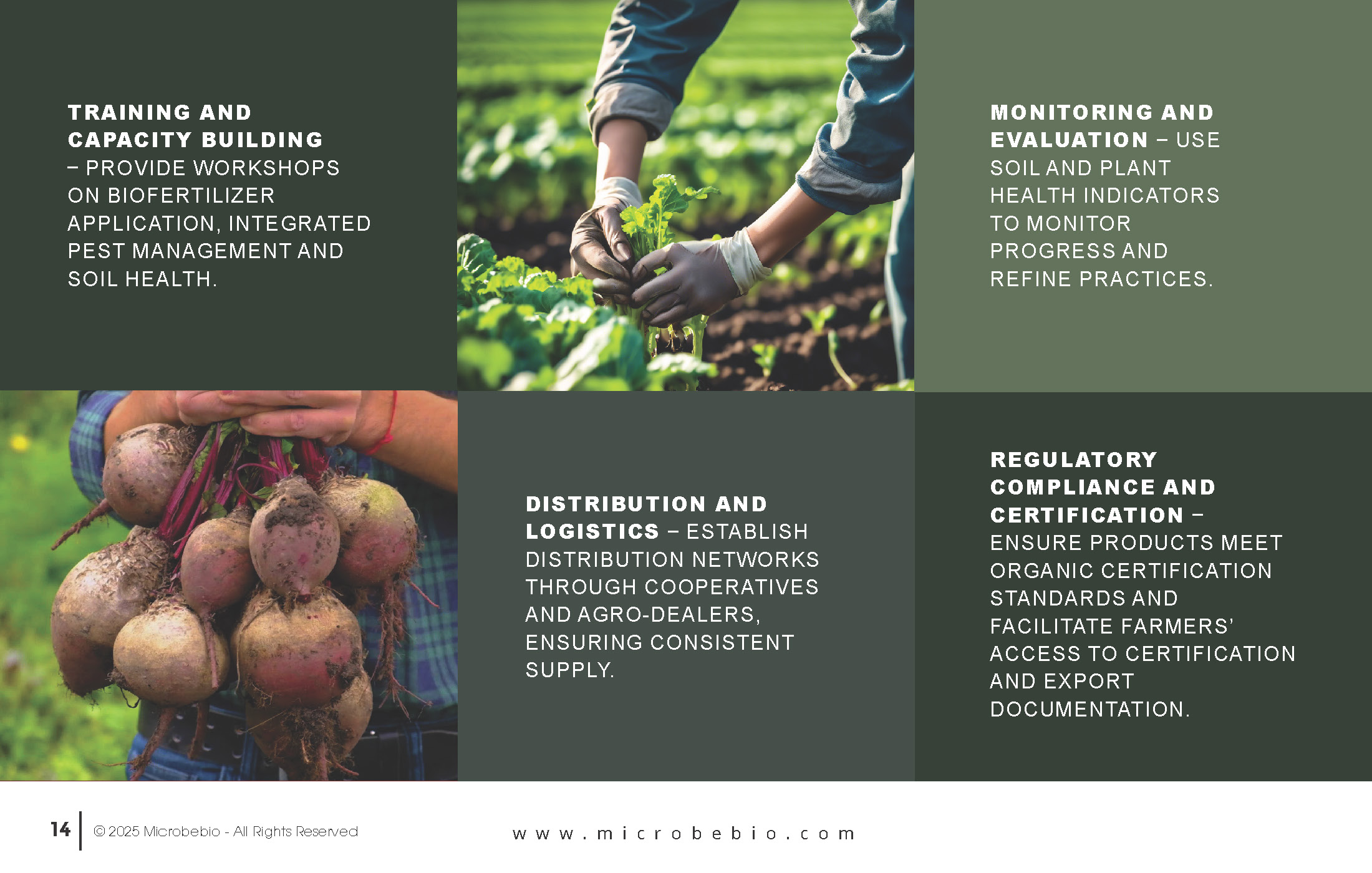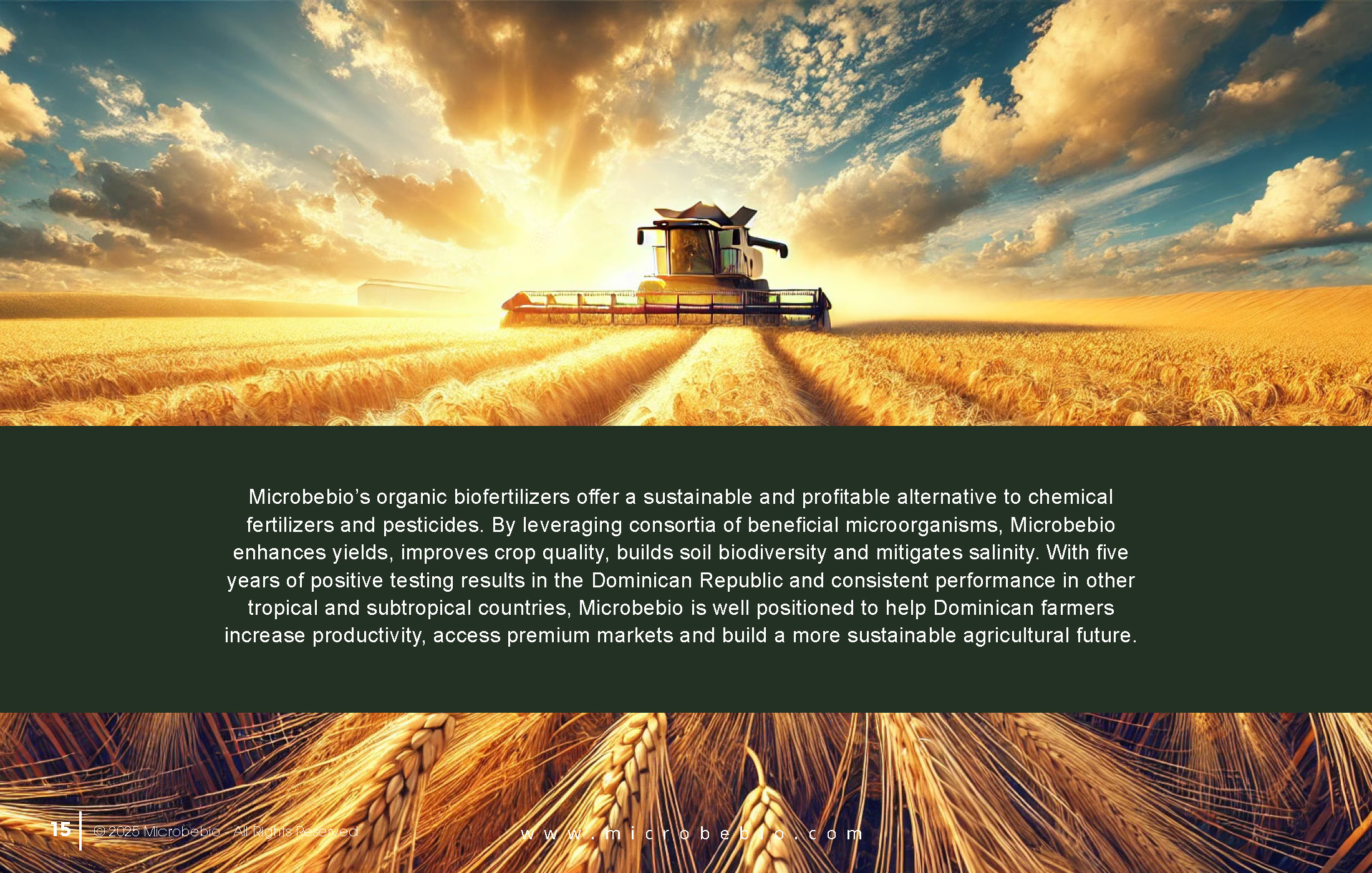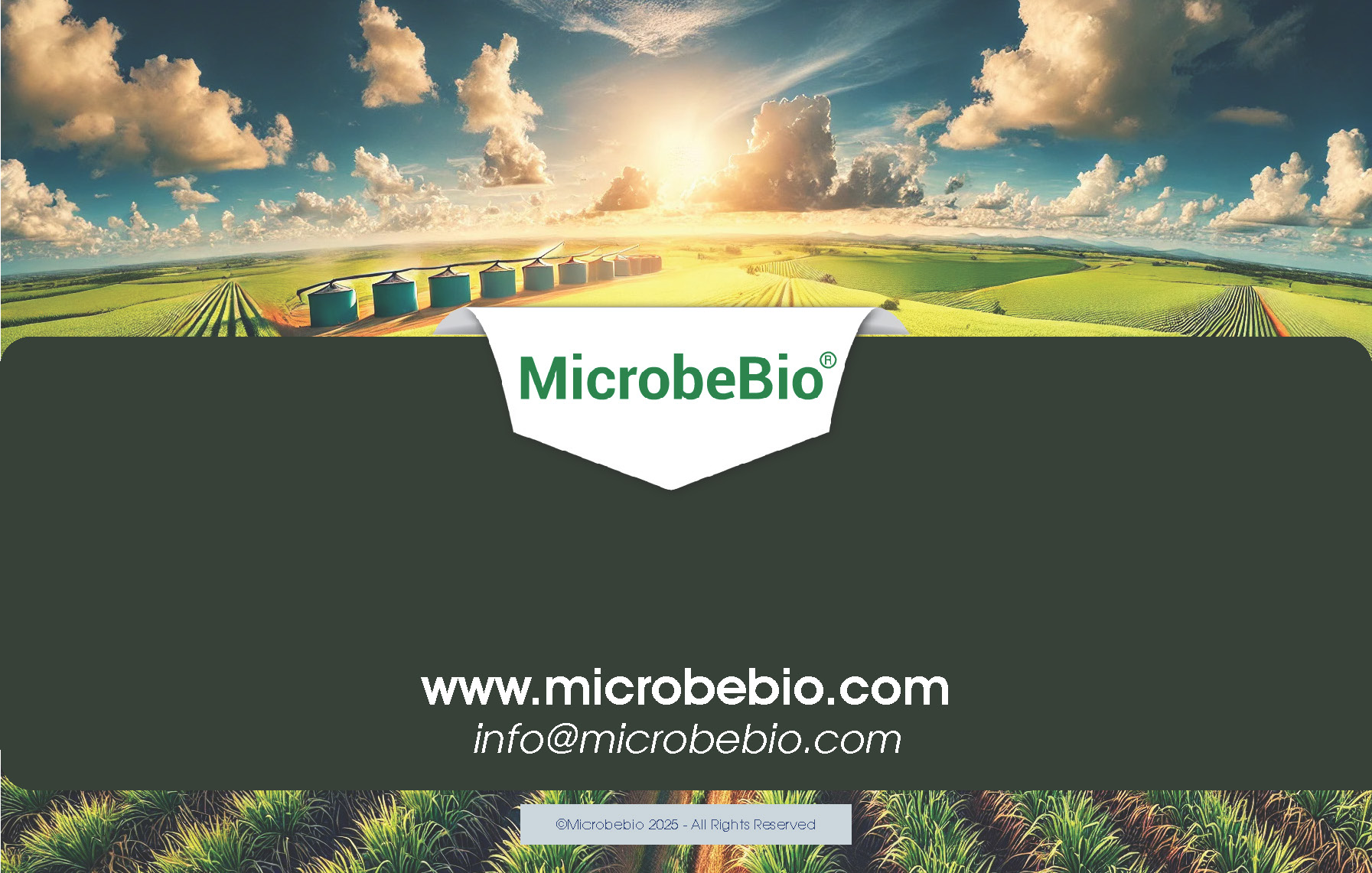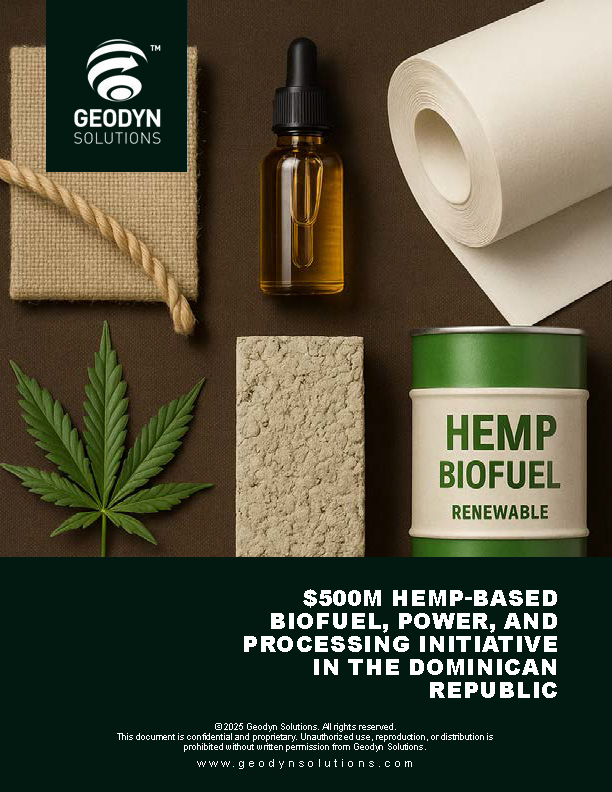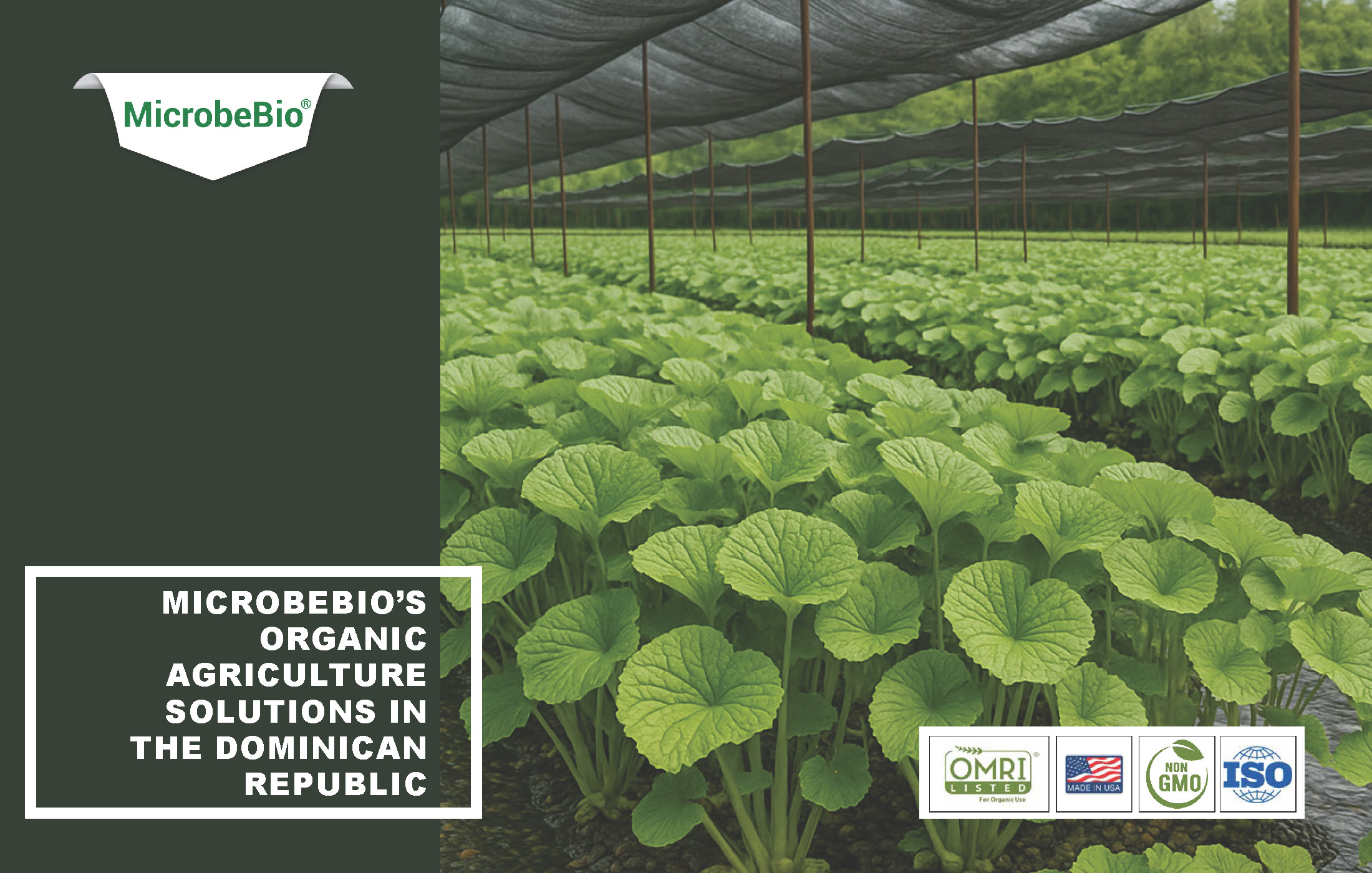Microbebio’s Organic Agriculture Solutions in the Dominican Republic
The Dominican Republic has a diverse agricultural sector with crops ranging from staples like rice, plantain and banana to high‑value crops such as coffee, cacao, tomatoes, chili peppers and sugarcane. Farmers face the dual challenge of increasing productivity and preserving soil health. Conventional chemical fertilizers and pesticides provide short‑term yield gains but often degrade soil structure, reduce biodiversity, and contaminate water bodies. As climate change intensifies, sustainable alternatives are essential.
Microbebio develops proprietary microbial biofertilizers and biostimulants that combine beneficial microbes with organic macro‑ and micronutrients. These products enhance plant growth, improve fruit quality and reclaim degraded soils. This proposal outlines how Microbebio’s cutting‑edge organic solutions can support Dominican agriculture.
Why Organic Microbial Fertilizers?
Biofertilizers are eco‑friendly, cost‑effective and non‑toxic. They contain live microorganisms that colonize plant roots and surrounding soil, improving nutrient availability, root growth and resistance to pests and diseases. Field research and demonstrations show that biofertilizers can improve yields by 10–40 % while enhancing sugar content, flavor and nutritional value. Beneficial microbes fix atmospheric nitrogen, solubilize phosphates, produce plant hormones and outcompete pathogens. Unlike chemical inputs, they build soil organic matter and biodiversity; after several seasons, microbial populations persist in the soil, reducing the need for repeated applications.
Environmental and Health Advantages
- Lower greenhouse‑gas emissions – Nitrogen‑fixing microbes reduce nitrous‑oxide emissions and improve carbon sequestration in soils. Organic inputs improve soil structure and water retention, mitigating climate change.
- Reduced pollution – Biofertilizers supply nutrients sustainably, reducing nutrient runoff and water pollution.
- Better for human and animal health – Organic biofertilizers avoid synthetic chemicals and heavy metals, supporting safer food and feed.
Microbebio’s Proprietary Organic Line
Microbebio’s formulations integrate multiple strains of beneficial microorganisms with organic carbon sources, seaweed extracts, fish hydrolysate and humic substances. Key components include:
- Nitrogen‑fixing bacteria that convert atmospheric nitrogen into plant‑available forms, reducing the need for synthetic nitrogen fertilizers.
- Phosphate‑solubilizing bacteria (PSB) that convert insoluble phosphates into soluble forms and improve soil structure and water retention.
- Potassium solubilizers and micronutrient oxidizers that release organic acids to mobilize potassium and trace elements.
- Plant growth‑promoting rhizobacteria (PGPR) that produce hormones, enhance nutrient uptake, suppress pathogens and build stress tolerance.
- Mycorrhizal fungi that form mutualistic associations with plant roots, increasing the surface area for nutrient and water absorption.
- Exopolysaccharide‑producing salt‑tolerant PGPR that create protective biofilms around roots, helping crops thrive under high salinity and stabilizing soil structure.
Benefits to Crop Performance and Quality
Microbebio’s biofertilizers offer multiple agronomic benefits:
- Growth enhancement and yield increase – Field results show yield increases of 10–40 % across a range of crops. The comparative chart below illustrates yield advantages of Microbebio versus chemical fertilizers.
- Improved aroma, taste and nutritional value – Balanced nutrition and microbial stimulation increase sugar accumulation (°Brix), antioxidants, vitamins and secondary metabolites. This leads to better flavor, aroma and nutritional profiles.
- Higher Brix levels and quality – Microbial biofertilizers enhance carbohydrate metabolism and nutrient transport, leading to higher Brix and longer shelf life.
- Disease suppression and pest resistance – Beneficial microbes outcompete pathogens, induce systemic resistance and reduce the need for chemical pesticides.
- Symbiotic relationship – Microbebio products foster symbiosis between microbes and plant roots. Nitrogen‑fixers exchange fixed nitrogen for plant carbohydrates; PSB liberate phosphorus; mycorrhizae extend root absorption; exopolysaccharide‑producing PGPR form biofilms that protect roots from salinity.
- Soil reclamation and long‑term remediation – Microbebio products increase soil organic matter and microbial diversity, restoring degraded soils, improving water‑holding capacity and reducing erosion.
Comparison with Chemical Fertilizers and Pesticides
Factor | Microbebio Organic Products | Chemical Fertilizers/Pesticides |
Yield & quality | Increase yields and improve sugar content, flavor and nutrition | Provide quick nutrient supply but can lead to nutrient imbalances and reduced quality |
Soil health | Build soil structure, enhance biodiversity, increase organic carbon and water‑holding capacity | Lower soil pH, degrade soil structure and reduce biodiversity |
Environmental impact | Lower greenhouse‑gas emissions; reduce runoff and water pollution | High nitrous‑oxide emissions and nutrient leaching contribute to climate change and water contamination |
Disease and pest management | Beneficial microbes suppress diseases and enhance plant immunity | Reliance on chemicals increases resistance and harms beneficial organisms |
Cost and sustainability | Cost‑effective over the long term; microbial populations persist in soil | High recurring costs; soil degradation necessitates increasing inputs |
Human & animal health | No harmful residues; supports safer food and feed | Chemical residues may affect human and animal health |
Case Studies and Crop Applications
Microbebio has been testing its formulations in the Dominican Republic for the last five years. Trials conducted under tropical and subtropical conditions on crops such as rice, banana, plantain, chili, tomato, coffee and sugarcane have consistently demonstrated significant yield improvements and enhanced quality compared with conventional chemical fertilizers. Similar trials in other countries with tropical and subtropical climates have shown comparable results, confirming the consistency and adaptability of Microbebio’s technology across diverse environments.
- Rice & cereals – Salt‑tolerant PGPR enhance germination, nutrient uptake and stress tolerance. Trials have shown notable increases in grain yield and quality.
- Banana and plantain – Mycorrhizae and PGPR improve root mass and nutrient uptake, resulting in larger bunches and higher sugar content.
- Chili and tomato – Foliar and soil treatments increase flower set, fruit size and sugar content while reducing disease incidence.
- Coffee – Microbebio improves nutrient cycling in coffee plantations, leading to better berry size, aroma and yield.
- Sugarcane – Treatments enhance stem diameter and sucrose accumulation, boosting tonnage and sugar recovery.
- Additional crops – Trials in other countries have included maize, soybeans and vegetables, demonstrating similar gains in yield, quality and soil health under tropical conditions.
Yield Comparison Chart
Figure 1 – Estimated yields (tons per hectare) for major crops under chemical fertilizers versus Microbebio’s organic solution.
Economic Benefits and Export Potential
Switching to Microbebio’s organic solutions can significantly improve farmer profitability in the Dominican Republic:
- Higher revenues from yield and quality premiums – Increased yields and improved flavor and nutritional quality allow farmers to command premium prices locally and in export markets.
- Reduced input costs – After initial inoculation, microbial populations persist in the soil, cutting the need for repeated fertilizer applications. Lower reliance on chemical pesticides further reduces costs.
- Longer shelf life and reduced post‑harvest losses – Higher sugar content and balanced nutrition improve shelf life, reducing waste and enabling longer export journeys.
- Access to organic markets – With consumer demand for organic produce rising, switching to certified organic biofertilizers can open access to premium export markets.
- Sustainability incentives and carbon credits – Practices that reduce greenhouse‑gas emissions and sequester carbon may qualify for financial incentives and certifications.
Implementation Strategy for the Dominican Republic
- Soil and crop assessment – Conduct soil analyses across major agricultural regions to tailor Microbebio’s formulations to local conditions.
- Demonstration trials – Partner with leading farmers and research institutions to showcase performance across rice, banana, plantain, chili, tomato, coffee, sugarcane and other crops.
- Training and capacity building – Provide workshops on biofertilizer application, integrated pest management and soil health.
- Distribution and logistics – Establish distribution networks through cooperatives and agro‑dealers, ensuring consistent supply.
- Monitoring and evaluation – Use soil and plant health indicators to monitor progress and refine practices.
- Regulatory compliance and certification – Ensure products meet organic certification standards and facilitate farmers’ access to certification and export documentation.
Conclusion
Microbebio’s organic biofertilizers offer a sustainable and profitable alternative to chemical fertilizers and pesticides. By leveraging consortia of beneficial microorganisms, Microbebio enhances yields, improves crop quality, builds soil biodiversity and mitigates salinity. With five years of positive testing results in the Dominican Republic and consistent performance in other tropical and subtropical countries, Microbebio is well positioned to help Dominican farmers increase productivity, access premium markets and build a more sustainable agricultural future.
